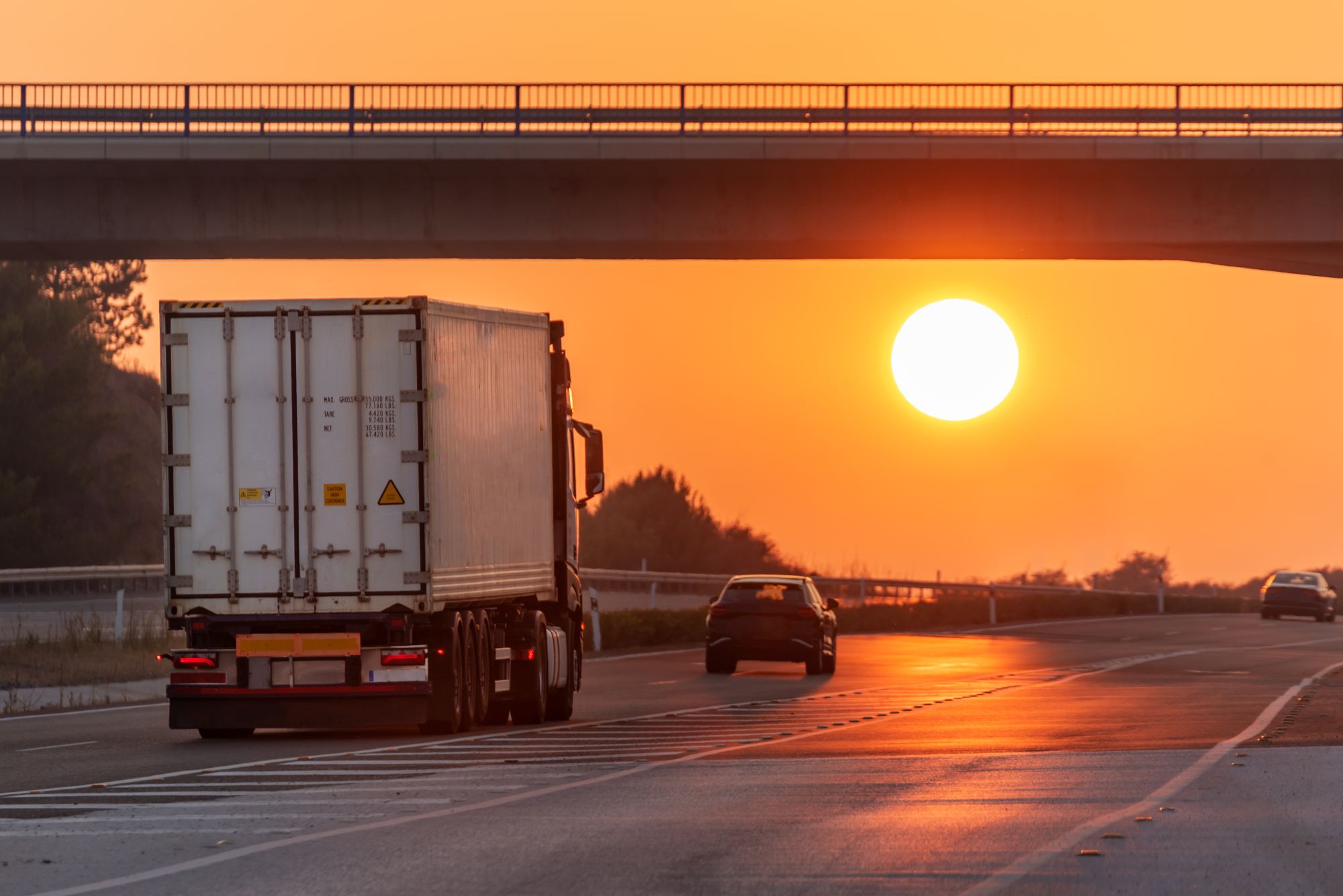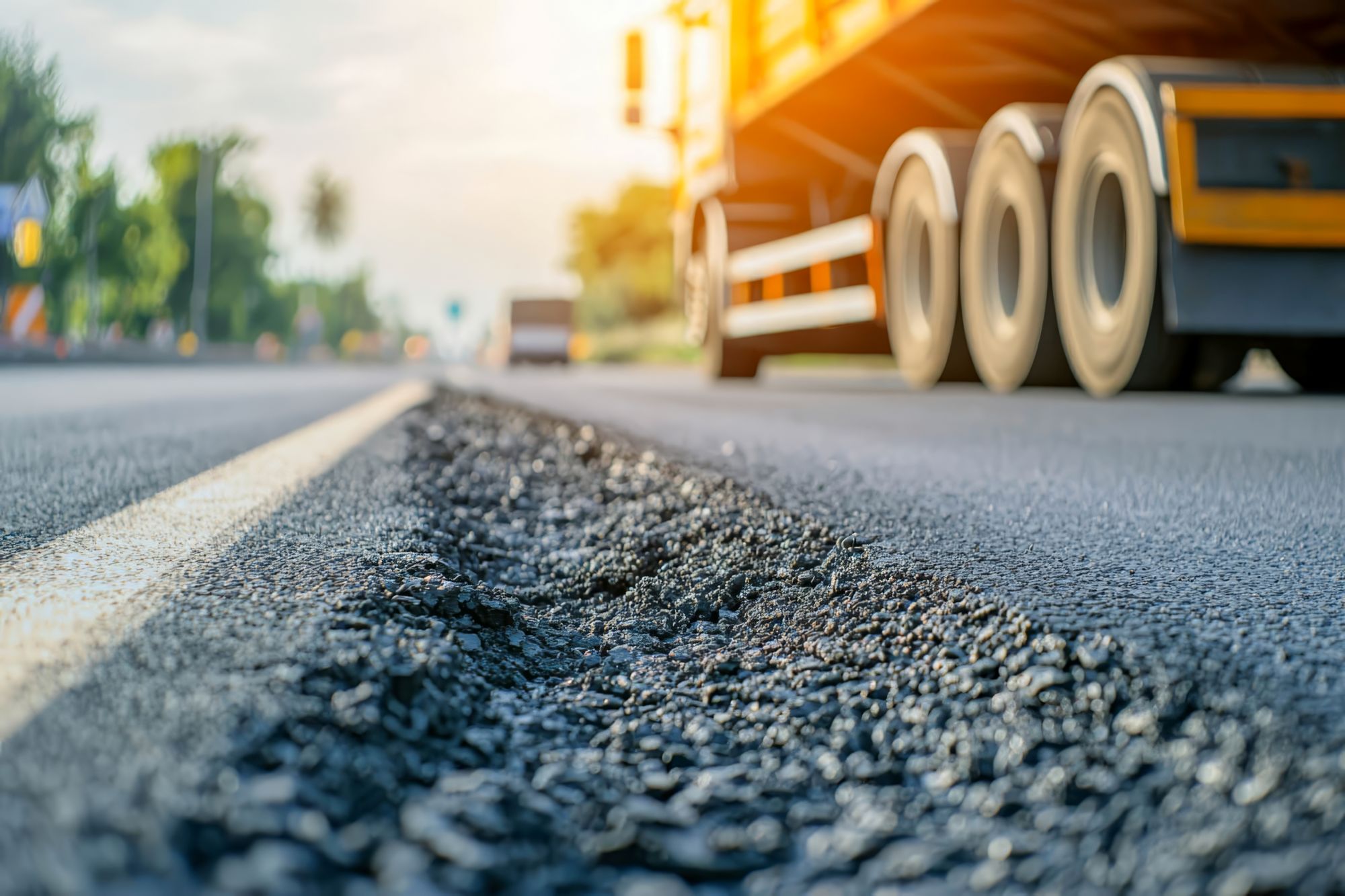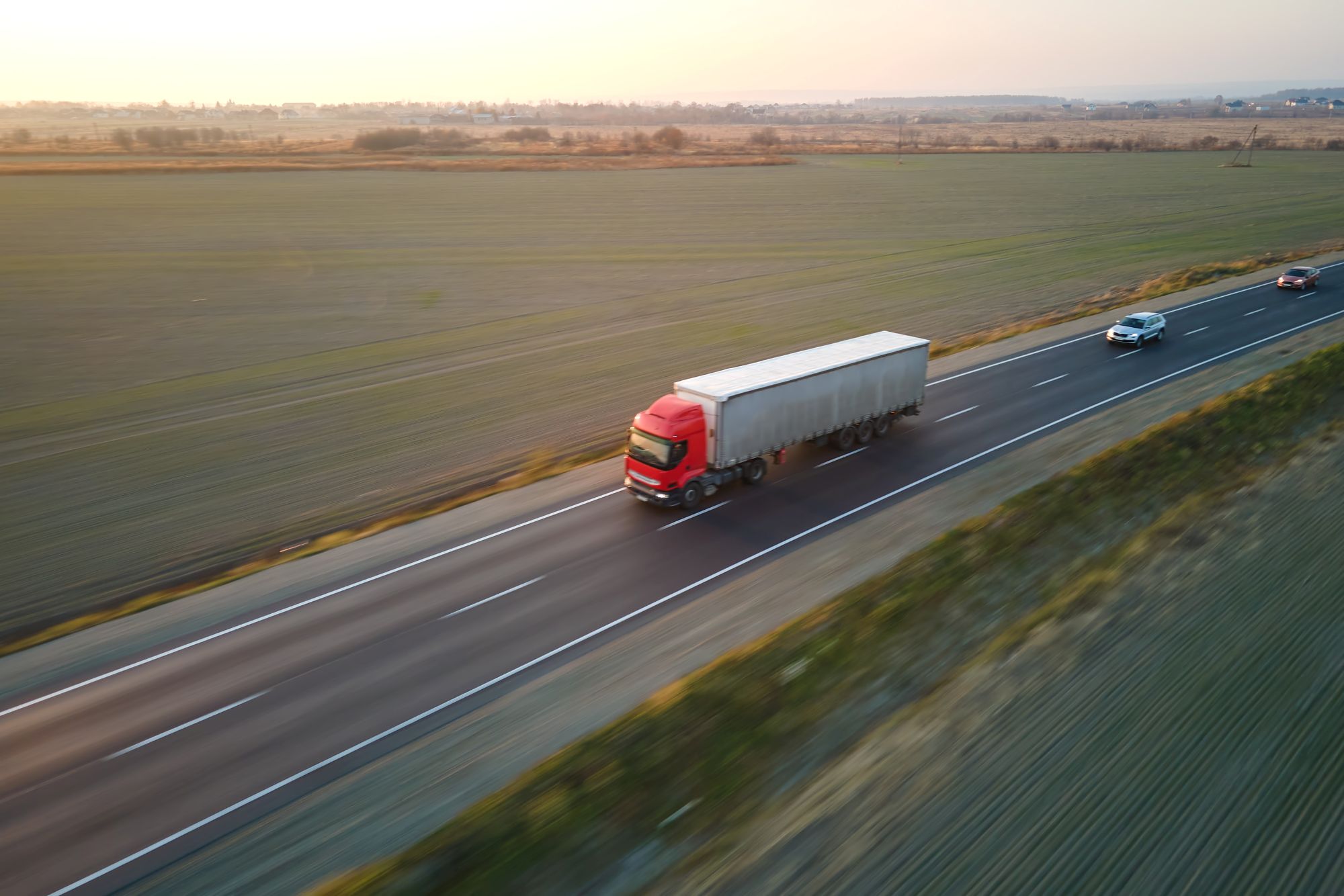
Guest
Modul în care valul de căldură din Europa afectează mobilitatea: cum să vă mențineți în frunte
Creat: 31.07.2025
•
Actualizat: 31.07.2025
Drumurile din Europa sunt fierbinți, iar căldura nu face decât să crească. Pe întregul continent, luna iulie 2025 a adus temperaturi record, defecțiuni ale infrastructurii și perturbări ale transportului la o scară fără precedent. Pentru operatorii de flote și șoferii profesioniști, provocarea nu mai este teoretică. Căldura extremă este aici și remodelează peisajul mobilității în timp real.
S-a scris mult despre impactul asupra sănătății și despre semnalele climatice ale valului de căldură din acest an. Dar mult mai puțină atenție a fost acordată modului în care afectează logistica, rețelele de transport de marfă și oamenii care asigură deplasarea mărfurilor peste granițe.
Acest articol explorează modul în care valurile de căldură perturbă sectorul european al transportului rutier - de la topirea asfaltului și autostrăzile crăpate până la incendiile de vegetație, îngrijorările legate de siguranța șoferilor și întârzierile în livrări - și oferă sfaturi practice pentru a ajuta flotele să rămână operaționale, rezistente și cu un pas înainte.
Valurile de căldură devin noua normalitate
Conform Organizației Meteorologice Mondiale, Europa se confruntă în mod regulat cu călduri extreme, cu temperaturi mult peste normele sezoniere. În prima săptămână din iulie 2025, Germania a înregistrat temperaturi maxime de peste 39°C, în timp ce Spania și Portugalia s-au confruntat cu temperaturi de peste 46°C în cursul lunii. Europa, în ansamblu, se încălzește de aproximativ două ori mai mult decât media globală.
Aceste condiții nu sunt doar inconfortabile - ele perturbă operațiunile. Cercetările citate de Logistics Business arată că valurile de căldură sunt un factor de risc tot mai mare pentru operațiunile de transport de marfă, reducând bunăstarea șoferilor, deteriorând încărcătura și întârziind livrările.
Ca urmare, încărcăturile sensibile la temperatură, cum ar fi alimentele, produsele farmaceutice și electronicele, sunt din ce în ce mai greu de transportat în siguranță. Operatorii constată o creștere a ratelor de deteriorare și a penalităților de întârziere a livrărilor. Situația este deosebit de complexă în zonele în care rețelele electrice sunt solicitate de creșterea cererii de răcire, reducând fiabilitatea lanțului frigorific.
Drumuri topite și autostrăzi crăpate
Unul dintre cele mai clare semne ale impactului căldurii asupra mobilității a apărut la începutul lunii iulie, când părți ale rețelei de autostrăzi din Germania au început să crape sub presiunea expansiunii termice. Secțiuni ale autostrăzilor A1, A9 și A10, printre altele, au fost închise pentru reparații urgente deoarece plăcile de beton s-au îndoit și rosturile s-au rupt - o consecință directă a valului de căldură prelungit din țară.
Pe măsură ce temperaturile solului cresc și vegetația se usucă, incendiile de vegetație devin, de asemenea, o caracteristică obișnuită - și periculoasă - a verilor europene. Conform rezumatului Wikipedia privind valul de căldură din Europa din 2025, incendiile de vegetație au izbucnit în sudul Spaniei, Germaniei și Greciei, provocând evacuări în masă și închiderea temporară a drumurilor principale și a punctelor de trecere a frontierei.
În iunie 2025, A939 din Scoția a fost închis din cauza incendiilor de vegetație, în timp ce incendiile au închis mai multe drumuri și tuneluri rutiere din jurul Marsiliei în Franța. Aceste închideri nu creează doar haos în trafic - ele înseamnă că vehiculele grele de marfă trebuie să schimbe ruta, adesea prin drumuri înguste și neadecvate, care pot prelungi durata călătoriei cu ore întregi.
În plus, fumul reduce vizibilitatea pentru șoferi și prezintă riscuri pentru sănătate, în special pentru cei care petrec ore îndelungate în cabină cu o filtrare inadecvată a aerului. Iar în multe zone, serviciile de urgență sunt solicitate, ceea ce înseamnă întârzieri în curățarea drumurilor afectate sau în gestionarea devierilor.

Siguranța conducătorilor auto
Riscurile pentru infrastructură sunt însoțite de riscuri pentru oameni. Șoferii profesioniști sunt deosebit de vulnerabili la stresul termic, deshidratare și oboseală. [Ghidul propriu de vară] (https://snapacc.com/newsroom/a-truck-drivers-guide-to-summer-in-europe/) al SNAP pentru șoferi subliniază pericolele supraîncălzirii cabinelor, stresul provocat de orele lungi la temperaturi ridicate și importanța sistemelor de răcire și a odihnei.
Multe facilități rutiere din sudul și estul Europei rămân slab echipate pentru a sprijini bunăstarea șoferilor în timpul valurilor de căldură. Stațiile de odihnă cu aer condiționat, parcările la umbră și accesul sigur la apă nu sunt garantate - ceea ce face ca [rețeaua de locații verificate și confortabile] a SNAP (https://snapacc.com/map/) să fie mai importantă ca niciodată.
"Valul de căldură din această vară este un semnal de alarmă", spune Raquel Martinez, director european de vânzări la SNAP. "Sistemele de transport din Europa au fost concepute pentru un climat mai rece. Dar nu vom da înapoi. Flotele care se adaptează acum - cu instrumentele potrivite, strategiile de odihnă potrivite și tehnologia potrivită - vor fi cele care vor prospera."
Interzicerea circulației camioanelor începe în Europa
Ca răspuns la căldură, mai multe țări au introdus sau au prelungit interdicțiile de circulație a camioanelor declanșate de căldură. După cum relatează TrafficBan.com, Bulgaria și Ungaria au impus restricții pentru vehiculele grele de marfă în timpul zilei, atunci când temperaturile au crescut în iulie 2025. Restricțiile s-au aplicat, de asemenea, vehiculelor grele pe anumite drumuri vulnerabile în anumite perioade.
În plus, interdicțiile privind circulația camioanelor legate de sărbătorile naționale din Germania, Franța, Polonia și Italia agravează aglomerația de vară. Detalii complete pot fi găsite pe Trafficban.com, care enumeră restricțiile regionale și orare de pe întregul continent.
Pentru șoferi și planificatori, aceste interdicții creează un mozaic de zone de conformitate și limitări de timp care necesită o navigare atentă și instrumente de planificare actualizate.
Impactul asupra asigurărilor
Având în vedere riscurile tot mai mari prezentate de căldura extremă, asigurătorii încep să își reevalueze expunerea. Acest lucru este de natură să afecteze primele în general. Asigurarea bunurilor în tranzit este sub presiune, în special în cazul încărcăturilor sensibile la temperatură, cu mai multe cereri de despăgubire cauzate de deteriorare și termene de livrare nerespectate. Costurile de asigurare a vehiculelor ar putea crește, de asemenea, ca urmare a creșterii numărului de cereri de despăgubire pentru defecțiuni și accidente cauzate de căldură.
În același timp, există o atenție tot mai mare în ceea ce privește răspunderea angajatorilor, în special dacă șoferii sau personalul suferă de probleme de sănătate legate de căldură din cauza unor dispoziții inadecvate privind bunăstarea. Împreună, aceste tendințe ar putea însemna prime mai mari și discuții mai dure privind reînnoirea contractelor pentru operatorii care nu dispun de planuri clare de reziliență.
Cum să prevenim valurile de căldură
La SNAP, credem că cheia navigării prin valurile de căldură din Europa constă în pregătire, planificare și gestionarea proactivă a bunăstării.
Iată ce pot face operatorii:
Planificați în funcție de temperatură și teren: Utilizați datele meteorologice în timp real pentru a ajuta șoferii să evite rutele cu risc ridicat.
Echipați șoferii pentru condiții: Aprovizionați vehiculele cu apă, echipament de umbră și truse de răcire de urgență.
Verificați zilnic reglementările: Rămâneți la curent cu modificările interdicțiilor pentru camioane la granițe utilizând surse verificate precum Trafficban.com.
Optimizarea stațiilor de odihnă: Încurajați șoferii să utilizeze aplicații precum intruck pentru a localiza facilități bine echipate și cu aer condiționat în întreaga Europă.
Întrețineți vehiculele pentru căldură: Acordați o atenție sporită anvelopelor, sistemelor de răcire și performanței bateriei în timpul întreținerii - în special pentru vehiculele electrice sau hibride.
Revizuirea planurilor de asigurare și de risc: Asigurați-vă că polițele iau în considerare întârzierile legate de climă, deteriorarea încărcăturii și daunele provocate de incendii.
Începeți astăzi să vă planificați pentru valurile de căldură
Consultați harta interactivă SNAP sau descărcați aplicația intruck astăzi. Cu mii de parteneri de încredere din întreaga Europă, aceasta este scurtătura dvs. către opriri mai sigure - indiferent de temperatură.



